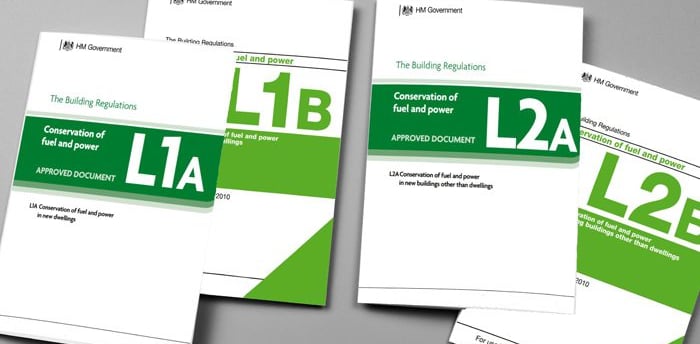UK Loft Conversion Building Regulations Guide 2025 | Safe & Compliant Loft Design
5/22/20253 min read


UK Loft Conversion Building Regulations: What You Must Know in 2025
Loft conversions are among the most cost-effective ways to increase living space and property value in the UK. But before you start knocking down ceilings and installing dormers, one thing is non-negotiable: UK Building Regulations approval.
Whether you’re creating a serene master bedroom, a productive home office, or a vibrant playroom in the attic, this guide covers everything you need to know about loft conversion building regulations in 2025.
What Are Building Regulations?
Building regulations are a set of legal standards that ensure buildings are safe, structurally sound, energy efficient, and accessible. In the UK, these rules apply to most types of building work—including loft conversions.
Even if your project qualifies under Permitted Development (PD) and doesn’t need planning permission, you must still get Building Regulations approval.
🔍 Key Point: Failure to comply with building regulations can result in stop-work notices, fines, or problems when selling your home.
Do I Always Need Building Regulations for a Loft Conversion?
Yes. All loft conversions that involve changing the roof space for habitable use (e.g. bedroom, study, playroom) require building regulations approval.
Even small Velux-only loft conversions or minor refurbishments in the loft must meet safety and insulation standards.
Main Areas of UK Building Regulations for Loft Conversions (2025)
Here are the core parts of the regulations you must meet when converting a loft in the UK:
1. Structural Safety (Approved Document A)
The existing structure—especially the ceiling joists and roof—must support the additional load from the new room(s), furniture, and occupants.
Reinforcement or replacement of joists may be required
Load-bearing walls and beams must be assessed by a structural engineer
RSJs (Rolled Steel Joists) or timber supports may need to be installed
2. Fire Safety (Approved Document B)
One of the most critical elements. A loft conversion must offer a safe escape route in case of fire.
Key requirements include:
30-minute fire-resistant doors on all habitable rooms along the escape route
A protected staircase that leads to a final exit
Interlinked smoke alarms on each floor (mains-wired with battery backup)
Fire-resistant materials and proper egress windows (min. 450mm opening)
🧯 If your loft conversion creates a third storey, additional fire safety measures may apply, including upgraded staircases and fire doors on lower levels.
3. Insulation and Energy Efficiency (Approved Document L)
Loft conversions must be thermally efficient.
Roof insulation: between rafters or over rafters to reduce heat loss
Walls and dormers: insulated to current U-value standards
Windows: must be double-glazed with low U-values
Air tightness and proper ventilation to prevent condensation build-up
4. Staircase Access (Approved Document K)
You must provide a permanent staircase that is safe and compliant.
Rules include:
Maximum 42° pitch
Minimum headroom of 2 metres (some exceptions for sloped ceilings)
Proper handrails and balustrades
Winders or spiral stairs allowed only when space is limited
5. Sound Insulation (Approved Document E)
Soundproofing is required between the converted loft and the floors below.
Use acoustic insulation slabs between joists
Consider resilient bars or floating floors to reduce impact noise
Doors may need to be fitted with seals to minimise sound transfer
6. Ventilation (Approved Document F)
Good air circulation is a must.
Background ventilation: trickle vents in windows
Mechanical ventilation for bathrooms or en-suites
Cross-ventilation through openable windows and roof lights
How to Apply for Building Regulations Approval
There are two main routes:
1. Full Plans Application
Submit detailed drawings to your local council. A building control officer will inspect the site during and after the work.
✅ Recommended for complex loft conversions
✅ Gives peace of mind with pre-approval
✅ Easier to manage changes or disputes
2. Building Notice Application
For smaller, simpler projects.
No prior drawings required
Faster to start the project
Inspections still occur during work
Less clarity up front can be risky if changes are required later.
Do I Need a Structural Engineer or Architect?
In most cases, yes. A qualified architect or loft specialist will:
Draw up plans that meet Building Regulations
Work with a structural engineer to assess load-bearing elements
Liaise with building control officers
Ensure proper fire safety and insulation standards
What Happens After Inspections?
Once your project passes all stages, you’ll receive a Completion Certificate from Building Control.
This document proves your loft conversion complies with UK Building Regulations and is essential when selling or remortgaging your home.
Design & Build Tip: Combine Beauty with Compliance
Here are design ideas that meet both aesthetic and regulatory needs:
L-shaped dormers to maximise space and headroom
Rooflight conversions that preserve external aesthetics
Eco-lofts with extra-thick insulation and solar-powered Velux windows
Minimalist staircases that meet headroom rules while saving space
Final Words: Build Smart, Stay Safe, Add Value
Meeting building regulations isn’t just a box-ticking exercise—it’s the foundation for a safe, efficient, and future-proof loft conversion.
Before you build up, make sure to:
Get expert plans
Choose the right application route
Comply with fire, structure, insulation, and stairway rules
Schedule inspections with Building Control
By following the rules and embracing modern design, your 2025 loft project will be a space to love—and legally solid for years to come.